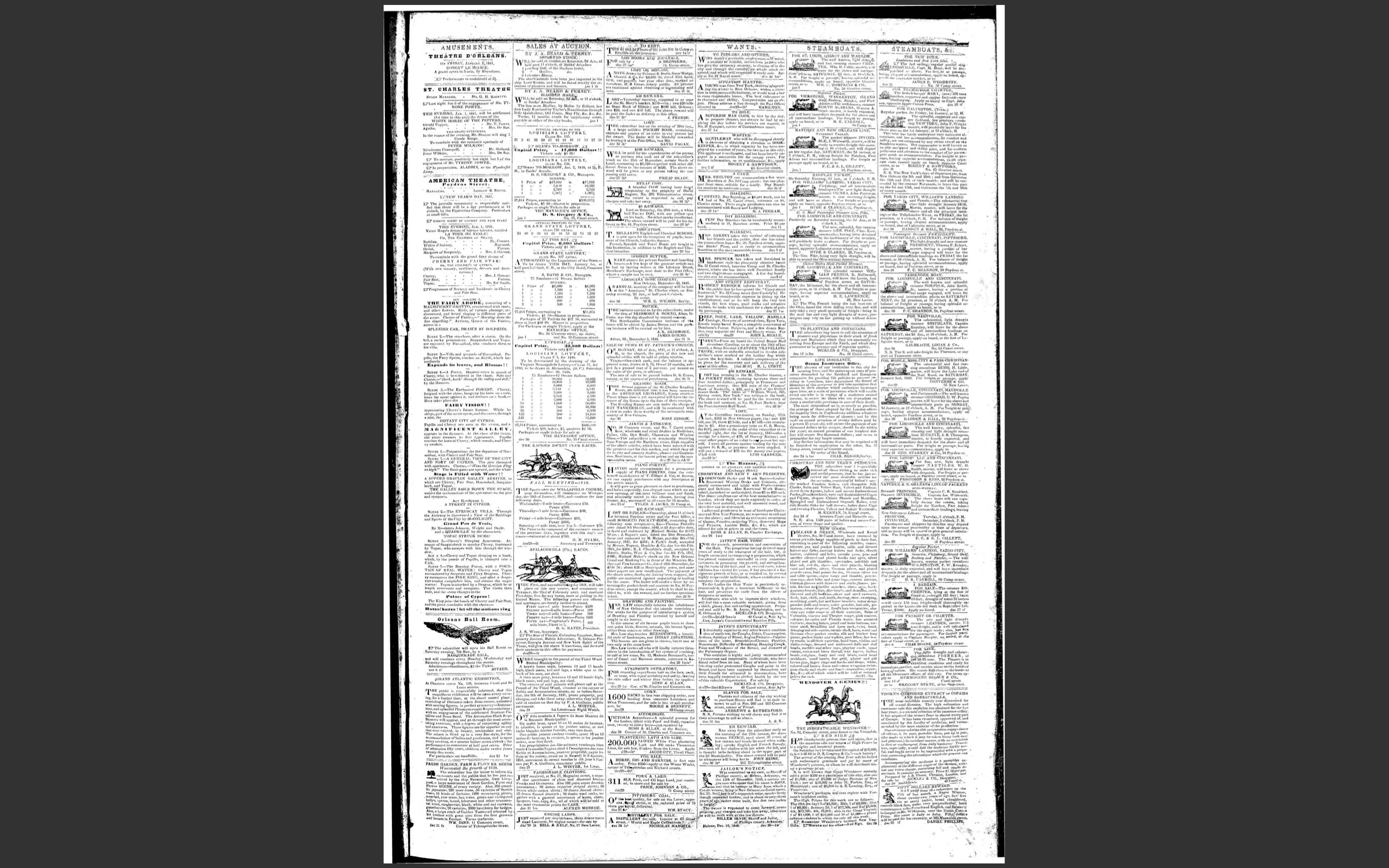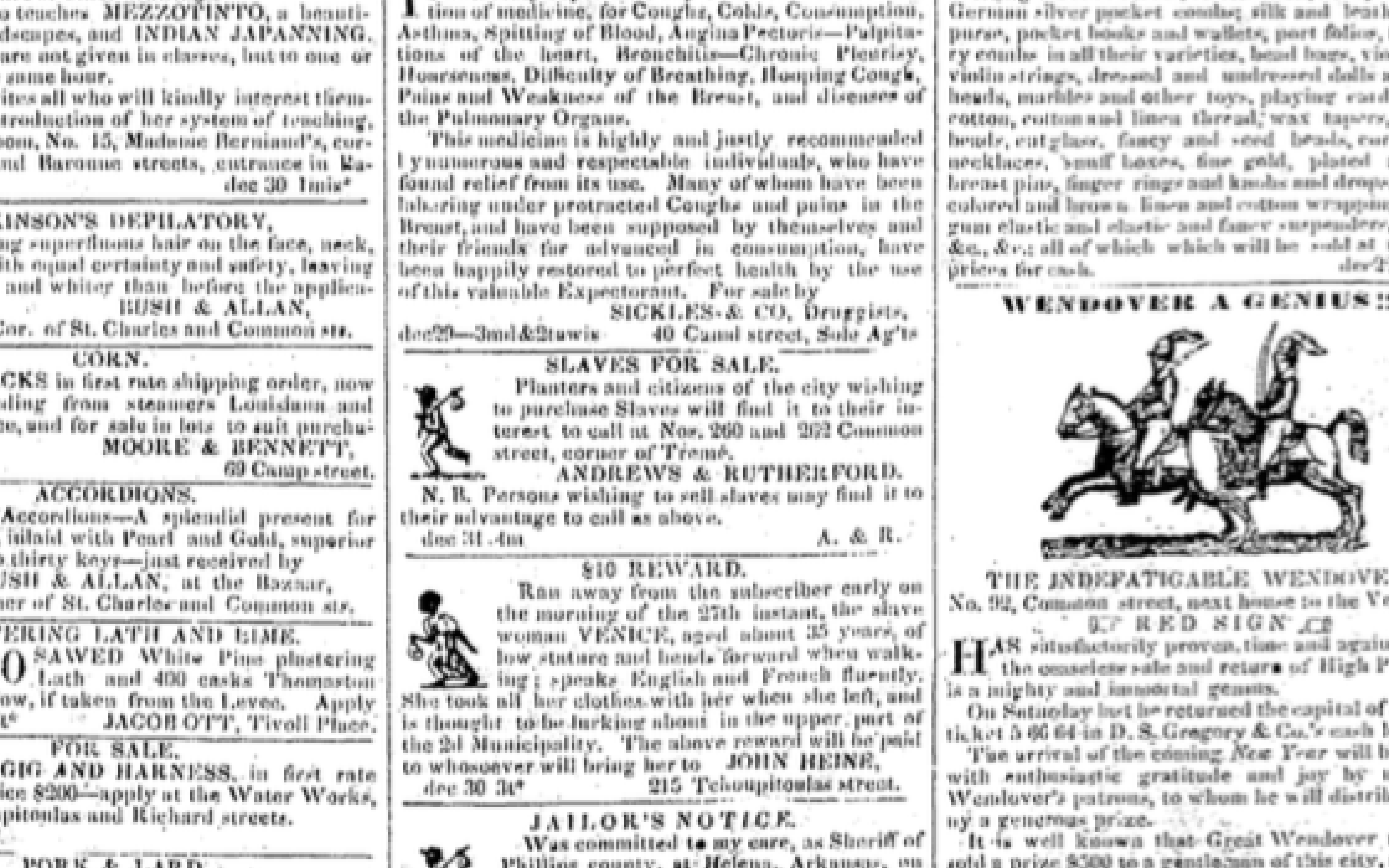By the middle of the 1800’s, poles began to be driven into the ground along the Mississippi river’s front. The poles would lead to the building of warehouses and buildings for the city of New Orleans. Jackson Square offered an economic presence for New Orleanians. Native Americans of the area would come down river and trade with the people of New Orleans in what is now known as the “French Quarter” and even more specifically, Jackson Square. Jackson Square’s position makes it easy for travelers to see as the square runs horizontally to the river for 3 acres in the “heart of the French Quarter”. The large buildings and crowds of people attracted travelers, which brought commerce. The Square was a destination that no one could miss whether they were going up or down river.
It was very common for a family to take a walk around Jackson Square, formally known as “Place D’armes”. The square became the most known position for shipping, commerce, and everyday life for New Orleanians during the 19th century. Jackson Square in 1841, Place D’armes, could get a close comparison to today’s equivalent of Times Square in New York. Place D’armes was designed to replicate Place des Vosges, a town square in Paris, France. The plan for the city was to expand the economy of New Orleans through Jackson Square. We see this true in the sale’s ads of the Newspaper of 1841.
In the newspapers of January 1841, there are many excerpts on a wide scale range from state legislation to the local steamboat operations. When looking deeper into the papers, the importance of the layout and vernacular of the economic ads becomes very evident. Smaller ads of goods and services are sprinkled throughout the entire paper but they all lead up to the major sections of “Sales” and “Wants”. This newspaper company, The Daily Picayune, seems to put too many ads within the paper almost giving it the illusion that it will burst off the paper. Continuing, the layout of these ads and the vernacular used shows that these papers and the ads within them were used to target white families and more particularly, white males. This is seen through the ads of slaves being sold and traded and ads of penmanship classes for white families.

Piece from Times-Picayune archives of January, 1841
Jackson Square also acted as the heart of economics for the city giving people everything they needed. Jackson Square aided New Orleans in becoming the wealthiest city in America during the 1800s. Slaves were high in the market, as this time period was pre-civil war. Amongst these people who came here at their own will, there were many who came here against their will and were sold in the slave trading market. With efforts to keep people coming into Jackson Square and revenue flowing, Picayune tried to hide the ads and articles on slaves under the “Sales” and “Wants” sections on the second or third page of most of the newspapers. Knowing that the city and Jackson Square was filled with freed slaves and people from other cultures, they attempted to hide the ads of slaves for sale by making them small and at the bottom of the page. It can be assumed that The Picayune began hiding ads of slave trading in their papers because slave trading in Jackson Square began to cross laws. After the closing of the transatlantic slave trade, the city began shipping slaves in illegally.

Piece from Times-Picayune archives of January, 1841
Due to the illegal selling of slaves, the slave sales took place in a Jackson Square hotel room, a mere few feet from the exhibition halls hidden away from the poor and common people. This small part of the paper depicts a darker side of Jackson Square economics that is commonly looked through or not seen because of the strategically placed ads. The vernacular and dialect of the “sales” pages could be inferred to push people who may not have been able to read; however, for the wealthier white families it was a beacon to follow as the slave market was prominent in New Orleans. The formal vernacular also kept a lot of people away as well, any outsider to the slave market could have reported the illegal activity.
Looking at the language of the newspaper there is a resemblance between the language within the ads and those who spent their time and money within the Square. The language within the ads is formal and only those with a certain level education could understand or even read it. Many of the people who were common visitors of the stores and auctions were wealthy white males and females, as it is seen with the slave trade market. Of course, they were the only ones who knew about the sales and auctions because they could read. These families kept a money flow moving within Jackson Square. The dialect within the ads shows that they were targeting the wealthier families as they were the ones who kept a large part of the economy alive through their buying of slaves, goods, and services.
The Picayune newspaper gives a good representation of economics in Jackson Square in 1841. Prior to the civil war, slaves were still a part of the local economy even though large parts of the market became illegal and the newspaper represents this through the smaller ads being hidden amongst other ads. Just as in person, the ads blended in with the rest of the paper like the sales occurring feet away from common people without knowing. Lastly, the language within the ads of the paper show us the formality of who was wanted in Jackson Square to help the economy. Typically those who could read and write belonged to the wealthier families in the 1800’s. With the formal vernacular used it can be inferred that wealthier white families were doing most of the reading and shopping around the square.
 NOLAbeings
Multimedia artist Claire Bangser created NOLAbeings as a portrait-based story project that marries...
NOLAbeings
Multimedia artist Claire Bangser created NOLAbeings as a portrait-based story project that marries...
 Data corner: Adobe Suite (create a PDF, social media graphic, presentation, edit a photo and video
Data corner is where you go to work with analytics and top tech skills. It takes on everything from PERL and SQL to Canva and Sprout Social.
Data corner: Adobe Suite (create a PDF, social media graphic, presentation, edit a photo and video
Data corner is where you go to work with analytics and top tech skills. It takes on everything from PERL and SQL to Canva and Sprout Social.
